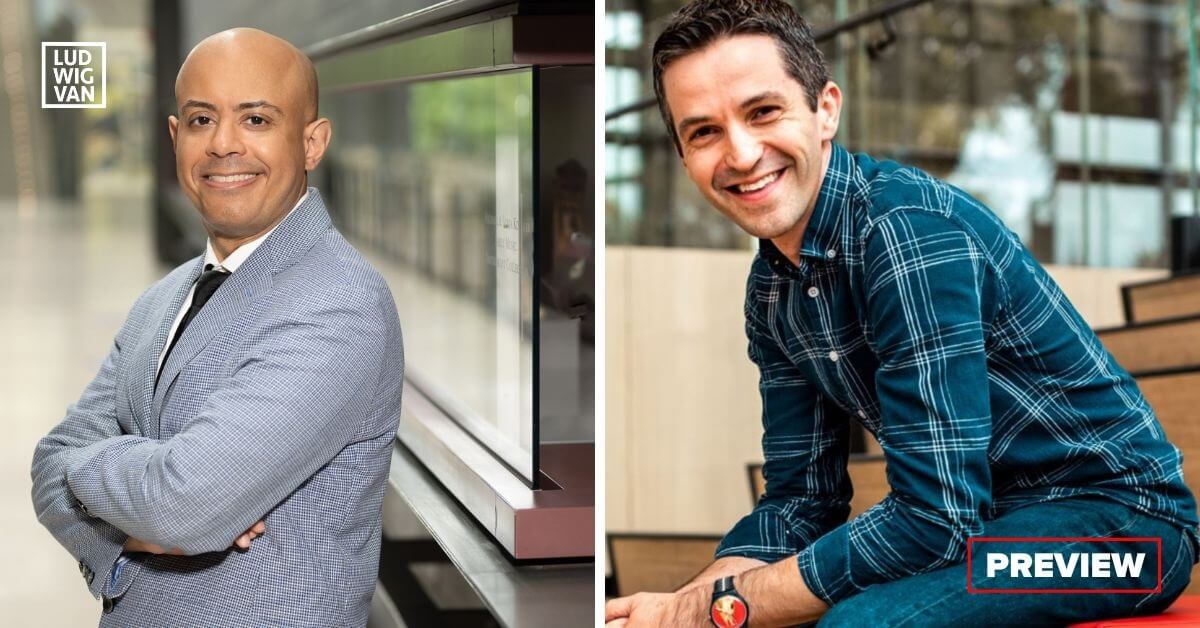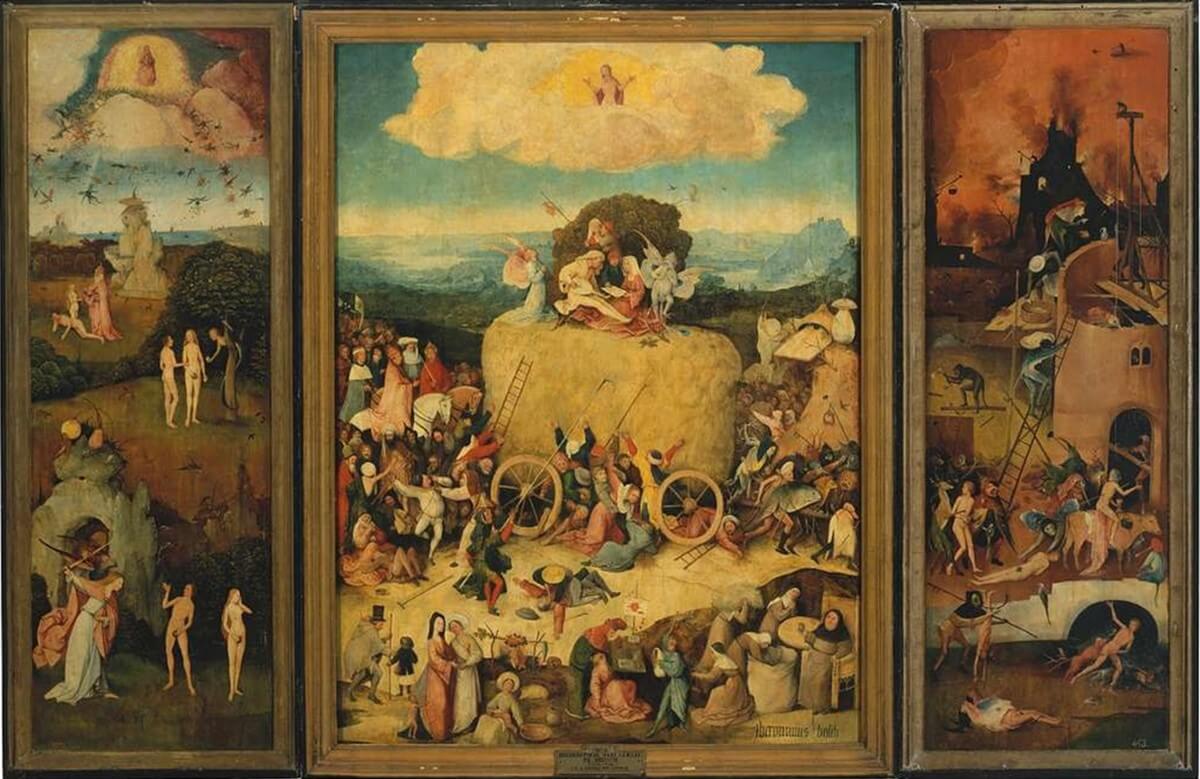
The 21C Music Festival is a celebration of new music, including a concert of premiering works from composers Ian Cusson and Stewart Goodyear. The concert takes place on Sunday, January 22 at 3:00 p.m.
We caught up with both composers for a few questions about the works they have created for the concert.
Stewart Goodyear
As a pianist, he’s perhaps best known for his immaculate interpretations of Beethoven and other classical composers, including his Toronto performance of all 32 of Beethoven’s piano sonatas in one day. Even within the classical tradition, however, Goodyear added his own touches that fell outside the lines of modern conventions, like his improvised cadenzas.
As a composer, his influences are broader, including the Caribbean music of his mother’s side of the family, and the classic rock albums his late father left him. Goodyear’s piece Specially Mixed includes seven movements with differing instrumentation, some for solo piano and others in an ensemble that includes Goodyear on piano, Michael Occhipinti on guitar, Joy Lapps-Lewis on steel pan, Roberto Occhipinti on bass, and Larnell Lewis on drums.
The new piece you’re premiering obviously incorporates elements of jazz as well as classical music. I know you also incorporate improvisation, a jazz essential, into some of your performance. Is a kind of fusion of the two genres a direction you will continue to explore?
This new piece incorporates rock, calypso, classical, improvisation. In every one of my compositions, those elements have inspired all that I have written so far. This is the first classical composition that involves instruments that have not usually been in classical genres.
Can you tell us about the musicians you’ll be performing with? How did you choose them?
Joy, Larnell, Roberto and Michael are musicians who I had the honour of working with four years ago when I presented an all-Goodyear program as part of the 21C Music Festival. When I was invited to return to the festival, I wanted to work with this group again, and explore the marriage of musical styles and backgrounds. Every one of these amazing artists brings a sense of openness, adventure and creation.
This performance and premiere come during your time as composer-in-residence at the RCM. Has that opportunity affected your work — perhaps allowing you to experiment in different directions?
The RCM has been supportive of every direction I want to make in music, and therefore encourages the freedom to be myself artistically without any limitations.
As someone who is well known for your interpretations of traditional classical repertoire as well as more experimental pieces like the one that will be premiering, how do you see the balance of old and new developing in the classical music world? i.e. it seems that more and more new music is finding its way into concert programming — do you feel like there’s a good balance between the two now, or is there a way to go?
There is always a way to go…and, to me, that is the beauty of the world of music. I think music is in a constant state of reincarnation, and the excitement of what artists create will always keep music relevant and alive in everyone’s heart and mind.

Ian Cusson
Métis/French Canadian composer Ian Cusson’s works have been performed by the Toronto Symphony Orchestra, among others. His body of works contains operas and art song as well as orchestral pieces.
Cusson’s pieces on the program consist of three works inspired by the iconic paintings of medieval artist Hieronymus Bosch, specifically, The Haywain Triptych, painted in 1516. The Garden of Earthly Delights and the Sonata for Oboe and Piano — The Haywain have already been performed in Toronto and Ottawa, while The Cure of Madness will receive its world premiere. Performers include the Duo Concertante (Nancy Dahn on violin and Timothy Steeves on piano), oboist Charles Hamann and pianist Frédéric Lacroix for the Sonata, and Trio Arkel — Marie Bérard, violin, Rémi Pelletier, viola, and Winona Zelenka, cello.
You’re presenting three pieces based on paintings by Hieronymus Bosch. How did that come to be an inspiration? Is he a favourite painter of yours?
I find inspiration in many places — novels, works of non-fiction, painting, and through other artistic disciplines. I’ve always been fascinated by the strange and beautiful visual world of Hieronymus Bosch whose works are allegorical, fantastical, and otherworldly. I first saw The Garden of Earthly Delights as a young person. It made a huge impression on me. It was visually overwhelming, and I remember feeling deeply disturbed by its frightening and wonderful images. What surprised me most was that a painting made over 500 years ago could still create such a strong, visceral impression.
How does the music reflect the paintings, and Bosch’s vision in them?
The Bosch paintings are emotional jumping-off points for the musical works. I don’t so much try to capture a musical narrative of the paintings, but instead create source material from the emotions that the images evoke in me. In other words, I try to translate the emotions I feel when experiencing the paintings into music.
How do you see the work of the 15th/16th centuries as relevant today — or, how do you make the connection between the time periods artistically?
The beauty of artistic lineages is that there are through lines running between artistic creations regardless of the culture, time period, or medium in which the works are made. While human beings in different eras and from different cultures all have unique experiences, at the end of the day, we all confront the same basic questions. We are all born, and we all die. We are all grappling with what it means to be alive and to be human.
The 21C Music Festival has been going strong for more than a decade — do you feel that contemporary music and living composers are making real inroads when it comes to concert and festival programming?
Contemporary music gets a bad rap. Many audiences are creatures of habit and seek out the familiar. I can be the same way. Contemporary music and festivals like 21C remind us that art is still being created. By platforming new and historically under-represented voices, the festival opens the door to new understandings of what music can be and what music can say in a diverse and globally connected world.
Get tickets for the performance and other concerts in the 21C Music Festival here.
#LUDWIGVAN
Get the daily arts news straight to your inbox.
Sign up for the Ludwig van Daily — classical music and opera in five minutes or less HERE.
- PREVIEW | SUMMER OPERA LYRIC THEATRE Presents Handel’s Xerxes, Mozart’s Idomeneo & Puccini’a La Boheme July 26 To August 4 - July 26, 2024
- PREVIEW | YENSA Festival V.2 Offers Black Flames Performances & Other Ways To Celebrate Black Women In Dance - July 25, 2024
- PREVIEW | Canadian Talent Conspicuous In The Met: Live In HD 2024-25 Season - July 25, 2024



